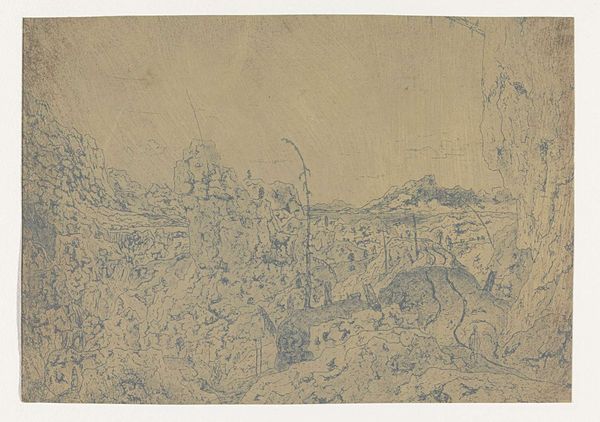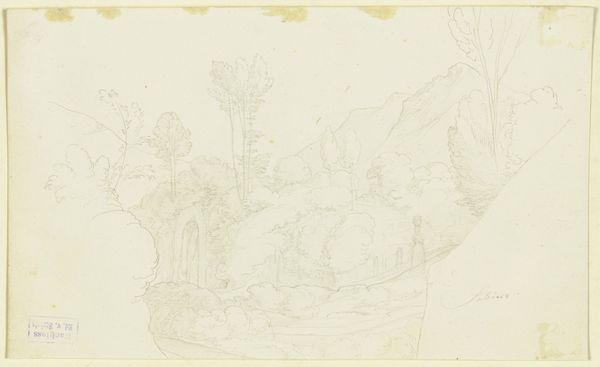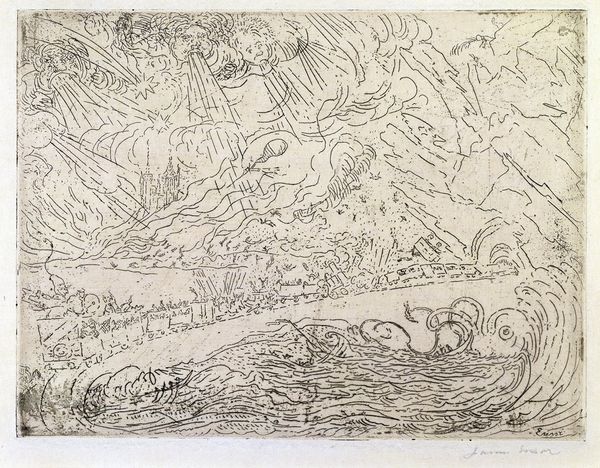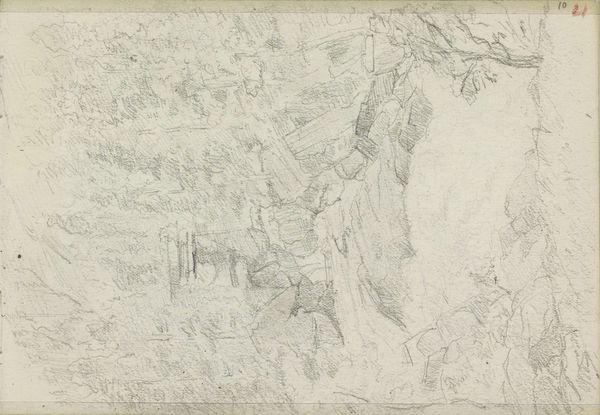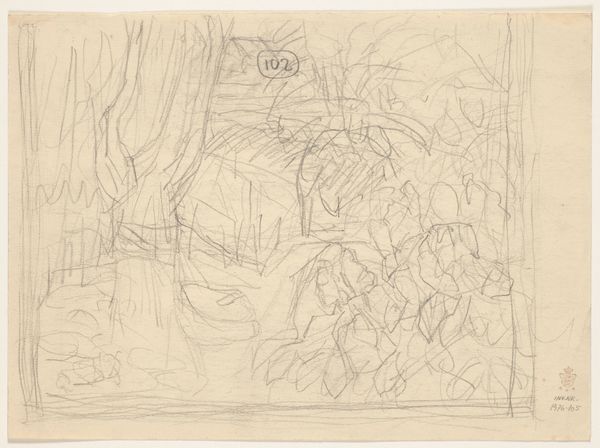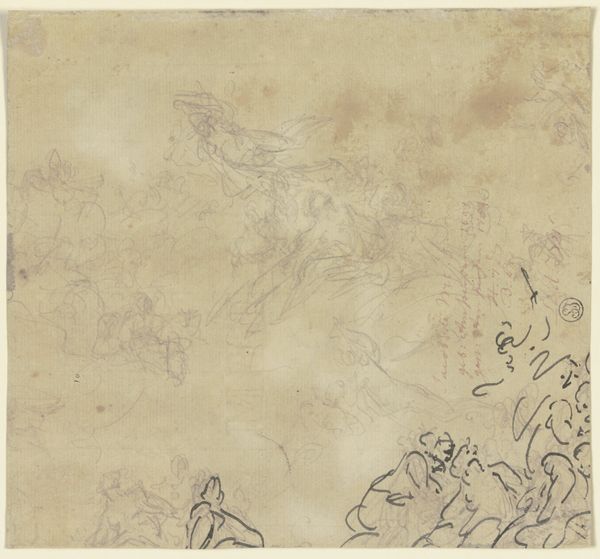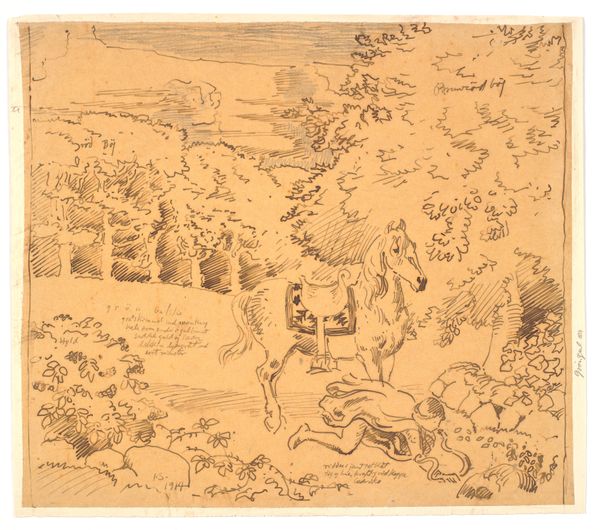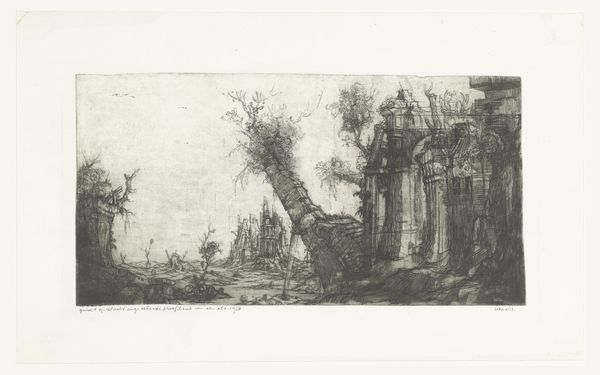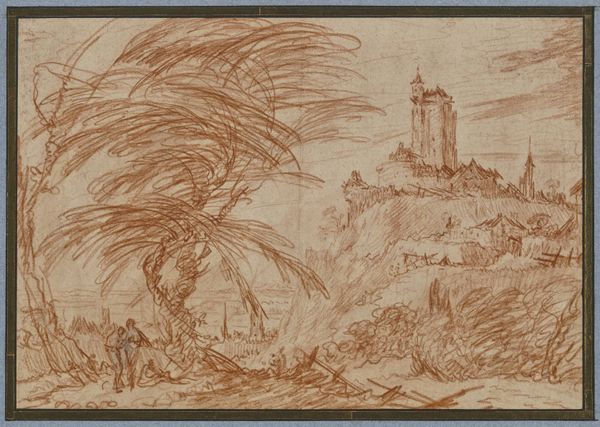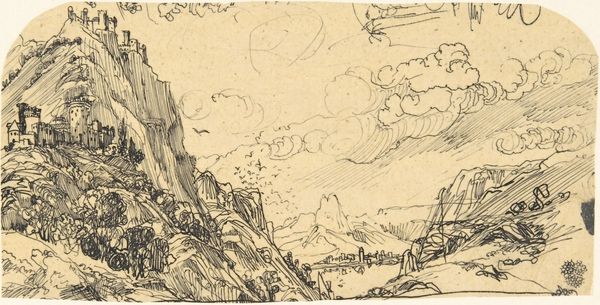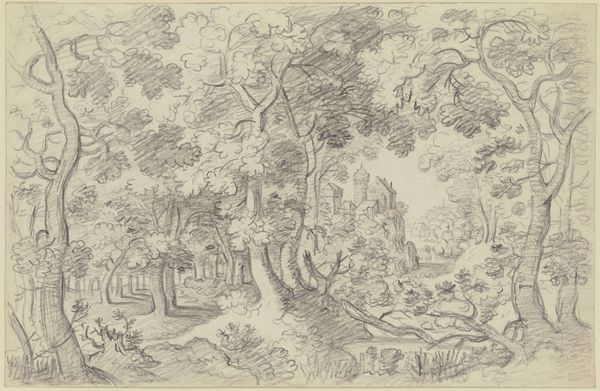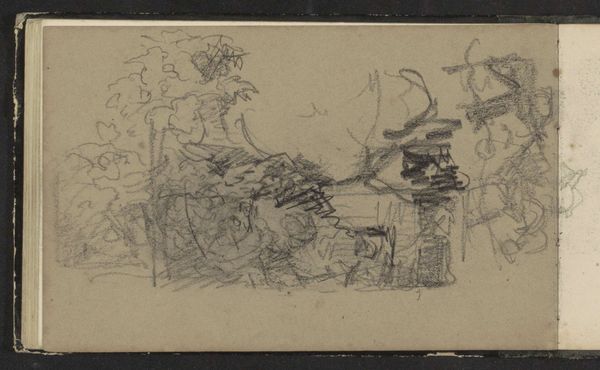
Dimensions: height 69 mm, width 104 mm
Copyright: Rijks Museum: Open Domain
Editor: This is Rodolphe Bresdin's "Mountain Landscape with a Castle by a Bridged Chasm," created sometime between 1832 and 1885 using ink. I’m immediately struck by the almost dreamlike quality of it. What do you see in this piece? Curator: It is fascinating how Bresdin uses ink to evoke a sense of the sublime. Notice the dramatic contrast, the soaring heights and plunging depths—these are Romantic ideals, definitely. But look at the castle. Does it feel protective, solid? Or precarious, even threatened by the vastness around it? Editor: I can see both. It's solid stone, but dwarfed by the landscape. Almost consumed. Is there any significance to depicting architecture within nature? Curator: Absolutely. Throughout history, we see architecture used to signify humanity's attempt to order and control nature. Here, however, the natural world overwhelms the architectural. The crumbling castle and turbulent sky may point to the inevitable decay of human ambitions. Note, also, that bridged chasm—linking what? What does that crossing suggest to you? Editor: Maybe it symbolizes connection but also a division, since there is clearly a huge ravine. I guess it could mirror the contrasts throughout the entire piece. Curator: Precisely! The power lies in the duality of those symbols, prompting deeper reflections on our relationship with nature, mortality, and the very human desire for permanence in an impermanent world. Editor: I’m struck by how the symbols unlock so much meaning. I'll definitely look at landscapes differently now! Curator: Yes, Bresdin really allows the landscape to speak volumes with the combination of those key symbols. It certainly opens a new perspective for understanding art, and perhaps, life.
Comments
No comments
Be the first to comment and join the conversation on the ultimate creative platform.

